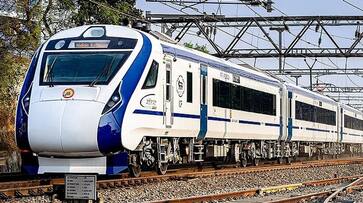India’s first sleeper Vande Bharat train is nearing launch. Set to enhance long-distance travel, it will begin operations soon, expanding India’s advanced rail network.
India is on the brink of a significant advancement in its rail transport system with the upcoming launch of its first sleeper version of the Vande Bharat semi-high-speed train. This new variant, manufactured by BEML, a Bengaluru-based company, promises to enhance long-distance travel across the country. Reports indicate that by September, nine sleeper racks for the Vande Bharat train will be completed, with plans to produce two to three racks monthly thereafter.
Until now, only the chaircar version of the Vande Bharat train has been in operation. This sleeper version aims to cater to a broader range of passengers by providing a more comfortable and spacious travel option. The Indian Railways plans to deploy these sleeper Vande Bharat trains on all major routes within the next three to four years, significantly expanding the reach of this advanced train model.
Discussions are already underway to launch a 16-coach sleeper Vande Bharat Express on the Patna-Delhi route. This will be a notable addition to the Vande Bharat fleet, which is designed to offer enhanced travel experiences. The maximum speed of the sleeper Vande Bharat train will be 130 km per hour, consistent with the current speed limit of the chair car versions.
Although the chair car version of the Vande Bharat Express is capable of reaching speeds up to 160 km per hour, it operates at a top speed of 130 km per hour on all Vande Bharat routes, including those from Patna.
The Railway Safety Commission is scheduled to inspect the new sleeper Vande Bharat trains, with the inspection expected to conclude by August. Railway Minister Ashwini Vaishnav has confirmed that by mid-August, all procedures for the sleeper Vande Bharat’s operation will be finalized, paving the way for its introduction to the public.
The arrival of the sleeper Vande Bharat train marks a significant milestone in India’s railway modernization efforts, promising enhanced comfort and efficiency for travelers across major routes.
Also Read: New rules coming into effect from August 1: Know how they affect you
Last Updated Jul 30, 2024, 11:47 AM IST









![Salman Khan sets stage on fire for Anant Ambani, Radhika Merchant pre-wedding festivities [WATCH] ATG](https://static-gi.asianetnews.com/images/01hr1hh8y86gvb4kbqgnyhc0w0/whatsapp-image-2024-03-03-at-12-24-37-pm_100x60xt.jpg)
![Pregnant Deepika Padukone dances with Ranveer Singh at Anant Ambani, Radhika Merchant pre-wedding bash [WATCH] ATG](https://static-gi.asianetnews.com/images/01hr1ffyd3nzqzgm6ba0k87vr8/whatsapp-image-2024-03-03-at-11-45-35-am_100x60xt.jpg)


